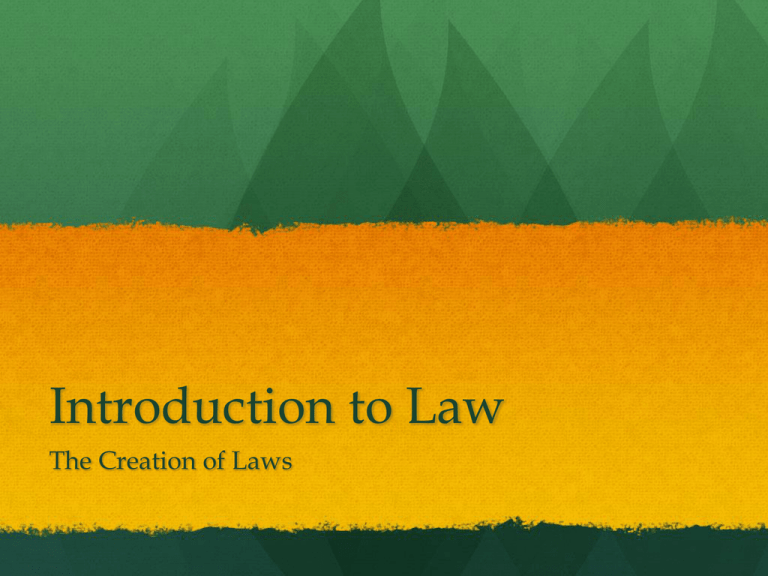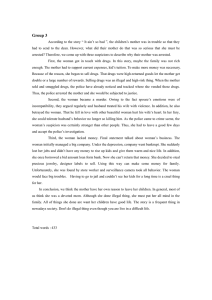Introduction to Law The Creation of Laws
advertisement

Introduction to Law The Creation of Laws Laws are primarily created through two different methods: Case Law Statutory law Statutory Law Written laws that are created and passed by a legislature on the state or federal level. Case Law Law that is based on judicial decision and precedent. The Fourth Amendment Actual Text Basic Idea The right of the people to be secure in their persons, houses, papers, and effects, against unreasonable searches and seizures, shall not be violated, and no Warrants shall issue, but upon probable cause, supported by Oath or affirmation, and particularly describing the place to be searched, and the persons or things to be seized. It is unreasonable for the government to search a place or seize a person or things without a warrant. Watson’s Car Watson was suspected of having stolen credit cards. The police searched him and found no cards. They then asked him if they could search his car. He said “Go ahead,” and the officer’s found two stolen credit cards under the floor mat. He was convicted and sent to jail. Cocoa Lane An armed robber entered the offices of a taxi company, stole $363, and ran. Two taxi drivers who heard shouts of “holdup,” followed the robber to 2111 Cocoa Lane. Police proceeded to the house and were let in by a woman. Officers spread out through the house and found Hayden upstairs pretending to sleep. He was arrested and convicted. Gas Station During the middle of the night a gas station was robbed at gunpoint. Witnesses saw a blue station wagon leaving the gas station with four men inside, one in a green sweater and one in a trench coat. Police found the station wagon about an hour later and observed two men matching the description inside. Chambers was arrested and the car was searched. Under the dashboard police found two guns and cards that belonged to the gas station attendant. He was arrested and convicted. Horton’s Rings Horton was suspected of robbing a coin collector. Police got a warrant to search his house for three rings that were stolen. Police did not find the rings during the search, but they did find guns that matched the description of those used in the robbery lying on a bed in one of the rooms. He was arrested and convicted. Does our original interpretation still work? Original interpretation: It is unreasonable for the government to search a place or seize a person or things without a warrant. So what would it look like now: It is unreasonable for the government to search a place or seize a person or things without a warrant unless the suspect’s CONSENT to a search, there are EXIGENT CIRCUMSTANCES, the suspect is in an AUTOMOBILE, or police find the items in PLAIN VIEW while legally searching for other evidence. No Vehicles in the Park Group Activity No Vehicles in the Park The town of Beautifica has a lovely park in its center. The city council wishes to preserve the feeling of nature, undisturbed by city noise, traffic, pollution and crowding. It is a place where people can go to find grass, trees, flowers and quiet. In addition, there are playgrounds and picnic areas. In order to make sure the park stays as it is, the city council passed a law, called an ordinance. At all entrances to the park, the following sign is posted: "NO VEHICLES IN THE PARK." Questions to consider What is the text of the law? What are the purposes of the law? Are there any words or phrases that might be tricky? How could the statute be improved? Clear definition of what a “vehicle” is? Clear definition of what it means to be “in the park”? Emergency vehicle/personnel exception? Text of Amended Statute Insert amended statute here during class discussion… State v. Charles Andy Charles, a 4-year old boy, is playing in the park with his remote control speed race car. The car goes 40 kilometers per hour and makes a loud buzzing sound. A dutiful police officer arrests him.



